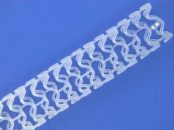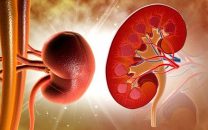Courtesy of Dr. Carlos Fava. The incidence of peripheral vascular disease is clearly increasing, progressing towards critical ischemic claudication and amputation. Angioplasty is currently the treatment of choice for these pathologies. Several times, an implanted stent ends up cracking due to extensive calcification, increasing the rate of restenosis and worsening critical ischemia. Technological development on drug-eluting…
Diabetics’ Silent Ischemia Myth Busted
Diabetes mellitus patients generally present more diffuse coronary disease, faster lesion progression and higher risk of restenosis after PCI. The way these anatomical differences translate into in a different clinical practice, compared to non-diabetic patients, remains unclear. Prior studies comparing the frequency of angina symptoms in diabetic vs. non-diabetic patients have arrived to contradicting outcomes,…
It Is a Fact: Cerebral Protection in TAVR Has Proved to Reduce Stroke and Death
Cerebral ischemic events after transcatheter aortic valve replacement (TAVR) have been identified as independent predictors of morbidity and mortality. New-generation devices have managed to partially reduce the rate of cerebral events, but it still is around 5.5% at 30 days for patients undergoing TAVR through transfemoral access. First data on cerebral protection devices had only shown…
These Are the Thrombosis Predictors for Absorb Bioresorbable Scaffolds
J Am Coll Cardiol Intv has recently published a special issue on bioresorbable scaffolds. Abbott’s decision to pull Absorb off the market probably prompted the fast publishing of all related articles sent to the journal. Bioresorbable scaffolds were developed in hopes that they would reduce the rates of events per year 1 year post-implantation by 1.5%-3%…
A New Opportunity for Renal Denervation
Courtesy of dr. Carlos Fava. At first, renal denervation enjoyed a considerable boost because, according to early studies, it lowered blood pressure (BP). However, after the results of the SYMPLICITY HTN 3 Trial its popularity decreased. Currently, the development of new technologies and greater operator experience may facilitate a change in this scenario. This…
Very Late Thrombosis in Bioresorbable Scaffolds
The presence of a metallic device interrupts normal laminar flow and creates an artery environment that favors thrombosis, leaving the vessel vulnerable to very late thrombosis. Dual antiplatelet therapy, a better implantation technique, and several improvements in new drug-eluting stents (DES) (thinner struts, and higher polymer stability and biocompatibility) have lowered significantly the incidence of…
Conscious Sedation in TAVR: Is It Advisable?
The fundamental advantage offered by transcatheter aortic valve replacement (TAVR) has always been the fact that it is less invasive than surgical valve replacement. So far, most improvements for these devices have derived in less invasiveness (e.g., by improving the profile of the eluting system). However, there are also cases of “deployment” reduction during the…
Introducing the number one enemy of PCI: diabetes
About 25% of patients with multivessel disease undergoing myocardial revascularization surgery or PCI have diabetes. In this subgroup, the benefit of surgery in terms of mortality has long been shown: in the BARI study (Bypass Angioplasty Revascularization Investigation) patients undergoing PCI had close to double the mortality rate at 5 years compared to those…
Additional Benefit from Radial Artery Graft in Myocardial Revascularization Surgery
Used to different extents according to institution, surgeon, and historical time, the radial artery graft is yet to prove whether it can improve the outcomes of myocardial revascularization surgery when added to a single or bilateral internal thoracic artery graft. The ART (Arterial Revascularization Trial) was designed to compare survival after bilateral vs. single left internal…
CLOSE Trial: Patients with PFO with high flow or associated with interatrial septal aneurysm receiving closure device experience lower rates of recurrent stroke
Several cases have shown an association between patent foramen ovale and cryptogenic shock, particularly in patients under 55 and in those with atrial septal aneurysm or a significant right-to-left shunt. Using PFO closure for stroke prevention has been controversial and, so far, no randomized studies have shown the superiority of this strategy compared to anti-thrombotic…









